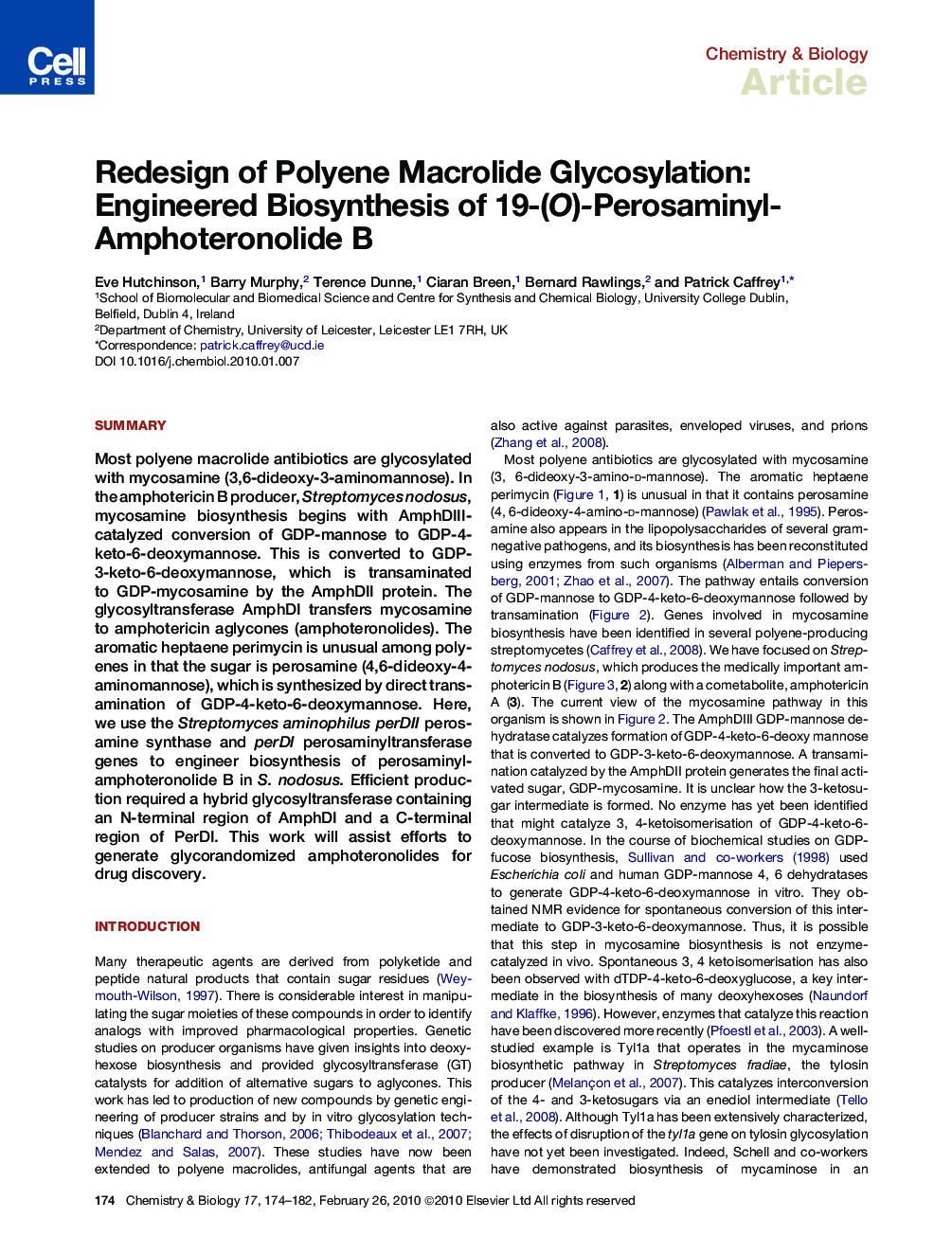| Article ID | Journal | Published Year | Pages | File Type |
|---|---|---|---|---|
| 1392570 | Chemistry & Biology | 2010 | 9 Pages |
SummaryMost polyene macrolide antibiotics are glycosylated with mycosamine (3,6-dideoxy-3-aminomannose). In the amphotericin B producer, Streptomyces nodosus, mycosamine biosynthesis begins with AmphDIII-catalyzed conversion of GDP-mannose to GDP-4-keto-6-deoxymannose. This is converted to GDP-3-keto-6-deoxymannose, which is transaminated to GDP-mycosamine by the AmphDII protein. The glycosyltransferase AmphDI transfers mycosamine to amphotericin aglycones (amphoteronolides). The aromatic heptaene perimycin is unusual among polyenes in that the sugar is perosamine (4,6-dideoxy-4-aminomannose), which is synthesized by direct transamination of GDP-4-keto-6-deoxymannose. Here, we use the Streptomyces aminophilus perDII perosamine synthase and perDI perosaminyltransferase genes to engineer biosynthesis of perosaminyl-amphoteronolide B in S. nodosus. Efficient production required a hybrid glycosyltransferase containing an N-terminal region of AmphDI and a C-terminal region of PerDI. This work will assist efforts to generate glycorandomized amphoteronolides for drug discovery.
